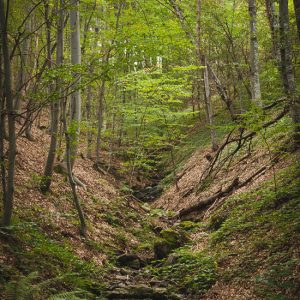
Most of us have had the experience of getting outside into the natural environment—whether that is into the garden, to the local park or to the woods—and feeling a lot better as a result. The benefit of spending time in the outdoors is something that many people have commented on over the ages. John Muir, the Scottish-American naturalist and conservationist, for instance, wrote in 1901 that: “Thousands of tired, nerve-shaken, over-civilized people are beginning to find out that going to the mountains is going home; that wildness is a necessity”.
Although he was writing more than a century ago, Muir’s ideas were prescient. In our society, with an ever-growing emphasis on virtual worlds accessible through sophisticated technologies and with the world’s population increasingly living in built up urban areas, we tend to spend less and less time immersed in nature. Current research strongly support’s Muir’s notion that this trend of being out of touch with nature ‘shakes our nerves’ and wears us out.
For example, research clearly indicates that there are considerable positive health benefits in living in areas with accessible green spaces. A 2013 UK investigation for instance, evaluating the longitudinal effect of green spaces on mental health found that moving to a greener urban space was linked with sustained mental health improvements [1].
Other studies show that taking exercise in outdoor natural environments has positive effects on our mental well being. A UK 2011 review study found that exercising outdoors in a natural environment resulted in more long-lasting feelings of well-being, compared to exercising in an indoor environment [2].
Even more interestingly, a 2015 study conducted at Stanford University compared the effects of walking for 90 minutes in an urban space with walking for the same period of time in a natural environment.[3] The results of this study demonstrated that even after this brief experience of walking in a natural space, participants reported engaging in less rumination (repetitive thought focused on negative aspects of the self). There was also evidence of reduced activity in an area of the brain associated with depression following these walks in nature. This research aligns with the results of studies which have found that the kind of thinking that goes on in green spaces is more meditative and creative than the thinking we engage in when we are indoors [4].
Getting outside into the natural environment and making contact with flora and fauna does not have to take the form of exercise, of course. Other studies have shown equal and similar benefits to getting involved in activities like gardening, or doing arts and crafts in the outdoors [5].
It seems, therefore, that we need to take note of the necessity of getting into green spaces in our everyday lives–these excursions are not an added extra, but of central importance of to our sense of well being, and our capacity to engage in creative and productive thinking and doing. This notion is best narrated by the naturalist and philosopher Henry Thoreau, who wrote in 1862, ” I believe that there is a subtle magnetism in Nature, which, if we unconsciously yield to it, will lead us aright. It is not indifferent to us which way we walk” [6].
Useful links
http://greatergood.berkeley.edu/article/item/how_nature_makes_you_kinder_happier_more_creative
References
[1] Alcock, I., White, M. P., Wheeler, B. W., Fleming, L. E., & Depledge, M. H. (2014). Longitudinal effects on mental health of moving to greener and less green urban areas. Environmental science & technology, 48(2), 1247-1255.
[2] Thompson Coon, J., Boddy, K., Stein, K., Whear, R., Barton, J., & Depledge, M. H. (2011). Does participating in physical activity in outdoor natural environments have a greater effect on physical and mental wellbeing than physical activity indoors? A systematic review. Environmental science & technology, 45(5), 1761-1772.
[3] Bratman, G. N., Hamilton, J. P., Hahn, K. S., Daily, G. C., & Gross, J. J. (2015). Nature experience reduces rumination and subgenual prefrontal cortex activation. Proceedings of the national academy of sciences, 112(28), 8567-8572.
[4] See, for example, Atchley, Ruth Ann, David L. Strayer, and Paul Atchley. “Creativity in the wild: Improving creative reasoning through immersion in natural settings.” PloS one 7.12 (2012): e51474.
[5] See, for example, Bragg, R., Wood, C., & Barton, J. (2013). Ecominds: effects on mental wellbeing. mind, 15, 4BQ.
[6] Thoreau, H. (2014). Walking. The Atlantic, June 1862
